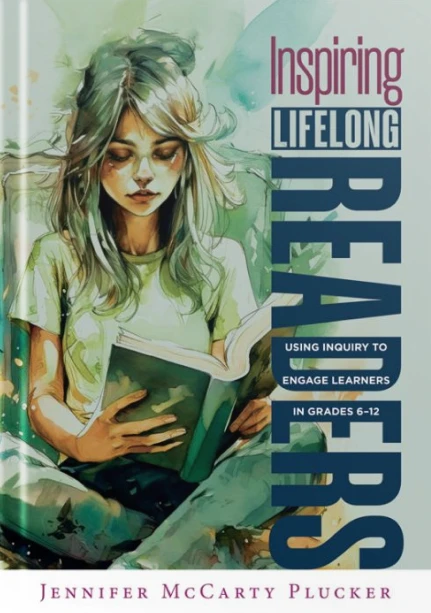I recently published a book with Solution Tree called Inspiring Lifelong Readers: Using Inquiry to Engage Learners in Grades 6-12. In it I share many “stories from the field” to give readers a glimpse inside my classroom as I was putting the strategies shared in the book into practice with students.
I thought for this month’s blog, I would share an excerpt from the book where I discuss my experience dealing with the many ways ninth graders would avoid reading or any kind of challenging task.

Stories From the Field
Working with the ninth graders in the Academic Literacy program, I learned quickly that my type-A personality was going to have to flex. I couldn’t expect students to be compliant, follow instructions the first time I gave them, or provide me with respect from the get-go just because I was their teacher. I didn’t want to lower my expectations, but I needed to meet these students where they were. So, I started keeping an observation chart. What were the behaviors I was seeing that seemed to get in the way of the learning we were doing? One of my colleagues did the same in her class.
When we compared notes, we started to see some patterns. We decided that instead of focusing on the negative aspects of students’ behavior, we would study, compile, and characterize the behaviors to better understand them. In that meeting, we created our “cast of characters.” Meet them here. Have you met some of these students yourself?

Tardy Tracy—Isn’t there a clock on your cell phone?
Absent Ahmad—MIA . . . a lot.
Bobby Belligerent—The answer is always no!
Jack Jokester—Lots of jokes, often inappropriate
Sleepy, Dopey, Droopy . . . Wait, are those dwarves?
Sneezy Sofia—Frequent visits to Nurse Peggy
Charlie Charmer—Everybody’s buddy
Forgetful Fay—No pencil, no notebook, no problem
Billy Bladder—Suspiciously well-hydrated
Celine Cell—So many texts, so little time
Messy Malik—Something could be living in that backpack
I-Couldn’t-Care-Less Chris—Surprisingly indifferent about everything
This activity allowed us to have a little fun with the challenges we faced in class. We realized that students had savvy techniques for avoiding work, especially if the work was hard. Recognizing the why behind their behaviors helped us see past the action and coach them to do the work. It also helped us avoid falling into an unwinnable trap of reacting to the behavior. After doing this activity ourselves, we decided to share this cast of characters with students. We told them we had met these students over the years and wondered if they recognized any of them. It became a fun way for students to begin to recognize their avoidance behaviors in a nonjudgmental way. We shared our own “characteristics” with our classes too. When I have a difficult task in front of me, for example, I become:
Online Shopper Olivia—So many cute items to put in my cart

When students know that we, too, have defense mechanisms when work gets hard, students are much more open to reflecting and thinking about how to fix it. I also share strategies for refocusing when these characters start to take over. For example, when Online Shopper Olivia wants to tempt me from my work, I negotiate. “OK, Olivia, if I can efficiently focus on this task for the next forty-five minutes, I will take a short break to see what great outfit you want me to put in my cart.” (Side note: I rarely actually purchase what is in my cart!)
Casting characters does not mean we excuse or accept unacceptable behaviors in class. There are times when a behavior is disrespectful or harmful, and you need to act on it immediately. But in most cases, the behaviors are procrastination and avoidance techniques, and you can much more easily coach or redirect. You can use your professional judgment and understanding of the student to determine if this redirect needs to be one on one and private or used in the moment. Here is an example of how I might redirect a student.

Charlie Charmer: “Thanks, Charlie, for the compliment. I would love to hear more about what you think about my fashion choices after class. Now use that charm of yours to write what you are thinking about Jason Reynold’s (2017) book, Long Way Down.”
Over time, I was able to simply notice the strategies my students were using and name how they were using them to refocus. It was affirming for students not only to independently apply these strategies but also for me to take notice. Sometimes classmates noticed as well (McCarty Plucker, 2023, pp 18-20).
If you are interested in hearing more about Inspiring Lifelong Readers, I invite you to listen to this conversation on The Literacy Teacher’s Life podcast.






